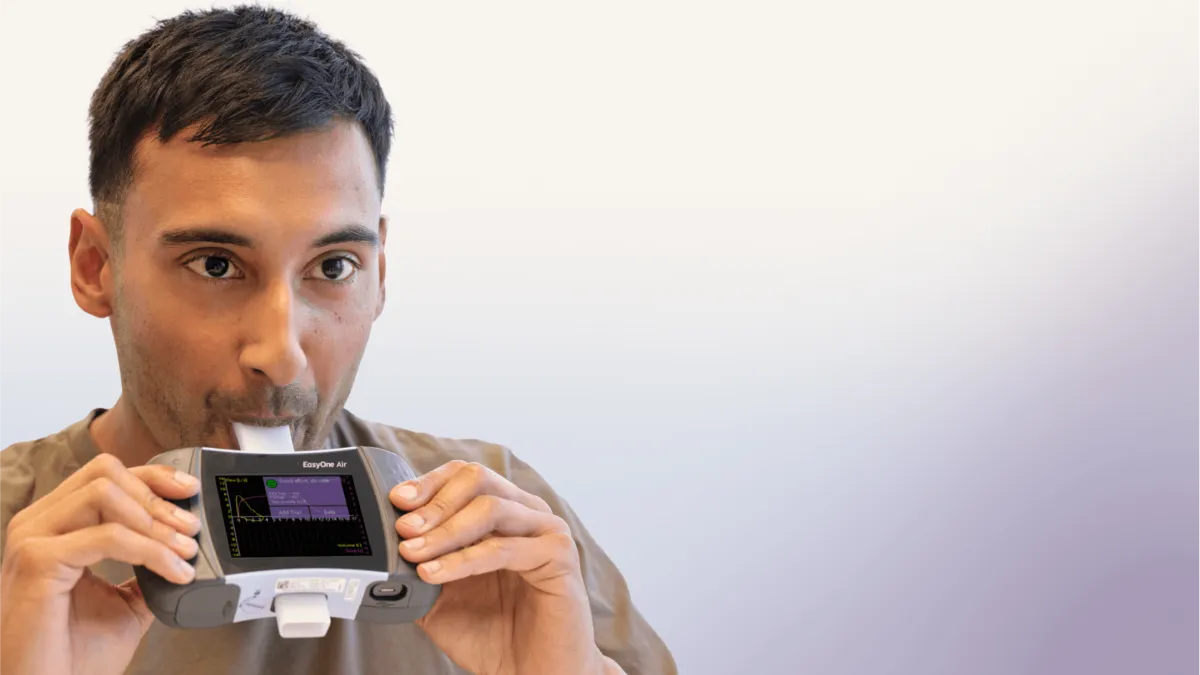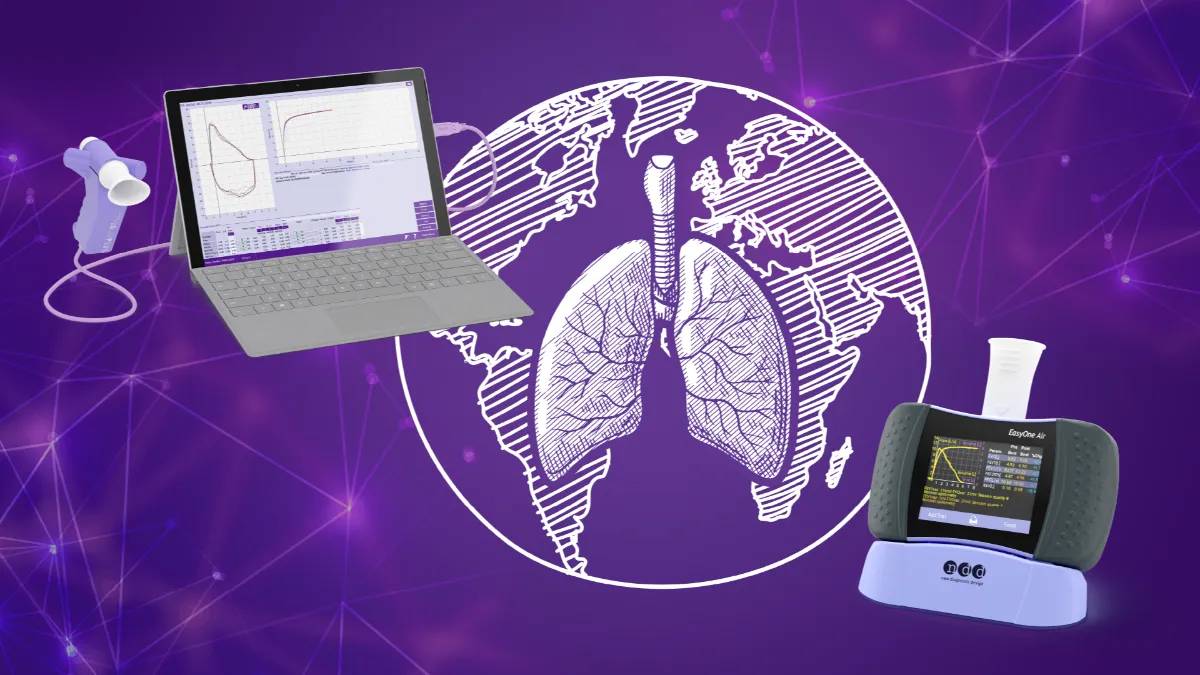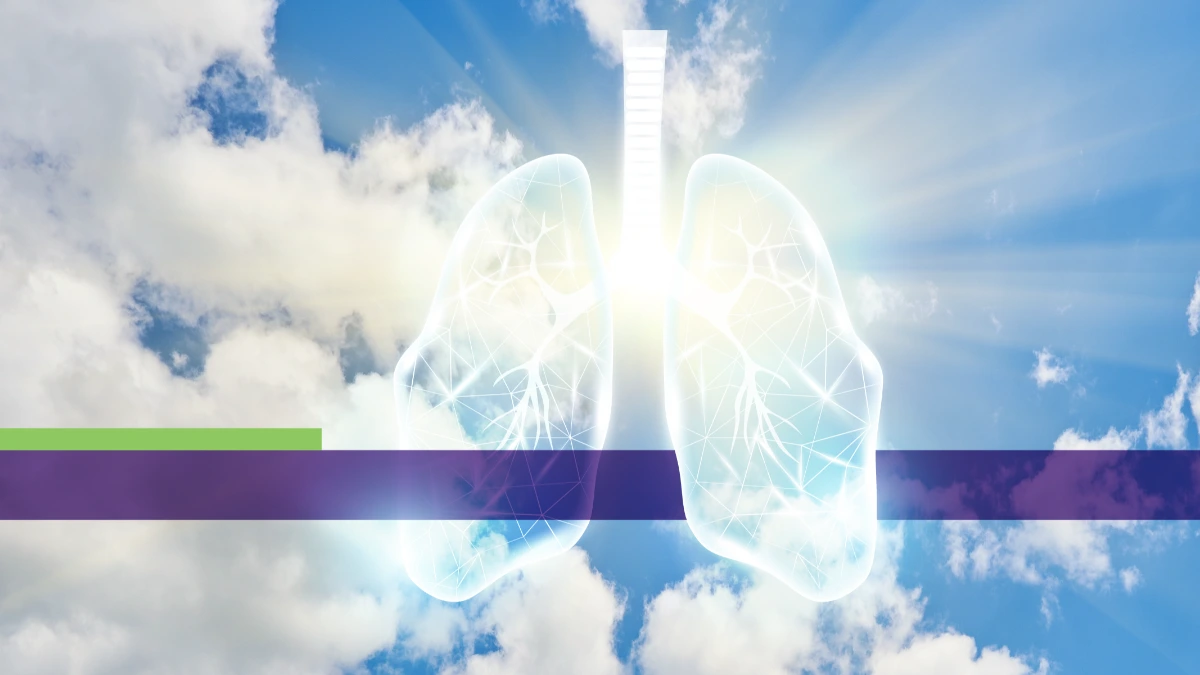Diagnostic vs. incentive spirometry: Evidence and indications
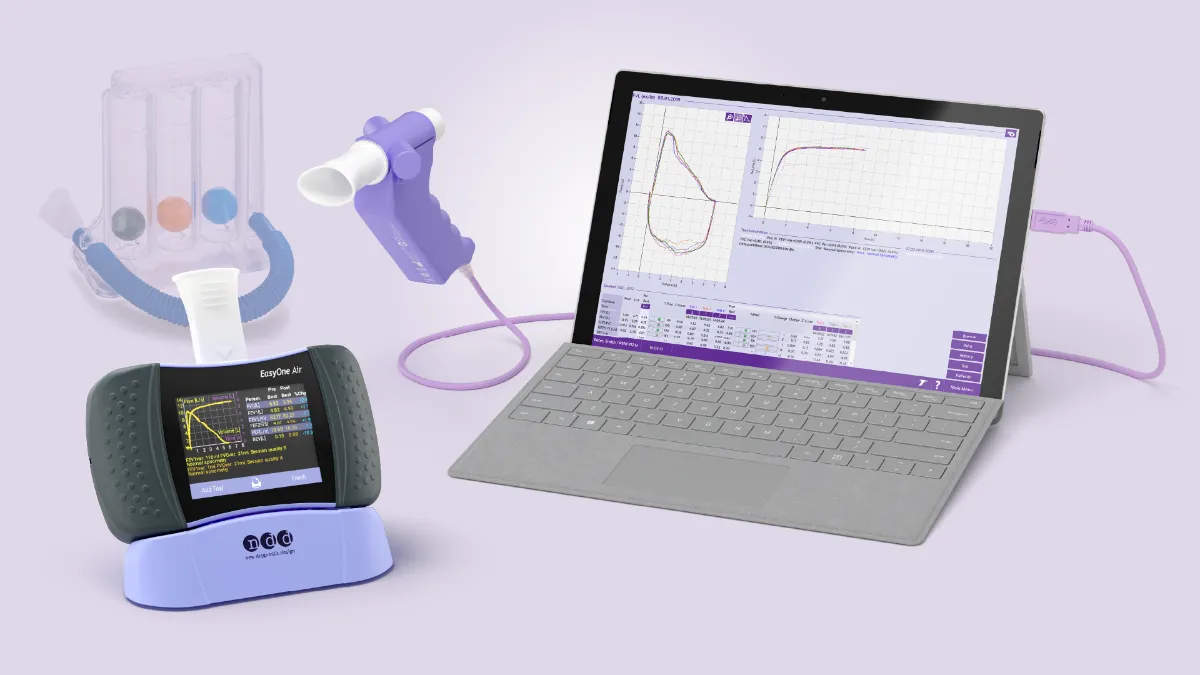
For people with lung diseases, pulmonary function tests are a standard part of their clinical management plan. There are many types of pulmonary function with the most commonly known being spirometry. Whenever the term “spirometry” is used, most people probably think of diagnostic spirometry, which measures the basic parameters of pulmonary function measurements: Forced expiratory volume in the first second (FEV1), forced vital capacity (FVC), the ratio between the two (FEV1/FVC), percent predicted of FEV1 (ppFEV1), percent predicted FVC (ppFVC), just to name a few. Diagnostic spirometry is used in the diagnosis and management of lung diseases such as asthma and chronic obstructive pulmonary disease (COPD). There is also incentive spirometry, which is not used to diagnose lung diseases, but serves a much different role.
Incentive spirometry #
Incentive spirometry should not be viewed as a way to manage lung function or health. Instead, incentive spirometry should be viewed as a form of pulmonary rehabilitation, intended to be treated less as a tool for clinical evaluation and more as a tool to exercise the lungs.1 Commonly used in physical, speech, and pulmonary therapy, incentive spirometry utilizes visual feedback to encourage the patient to breathe in slowly and deeply.2 For a patient to receive the most benefit possible from incentive spirometry, slow inspiration is required to stretch the lungs and airways, much like a yawn or sigh.3 In practice, despite using the same pulmonary mechanisms of inspiratory and expiratory breathing, incentive spirometry is conducted differently from diagnostic spirometry. Intended to encourage deep, slow breaths the incentive spirometry device provides feedback at a preset inspiratory flow.3
This form of pulmonary rehabilitation helps to encourage breathing, exercises an individual’s lungs, may help clear mucus, and promotes lung expansion.
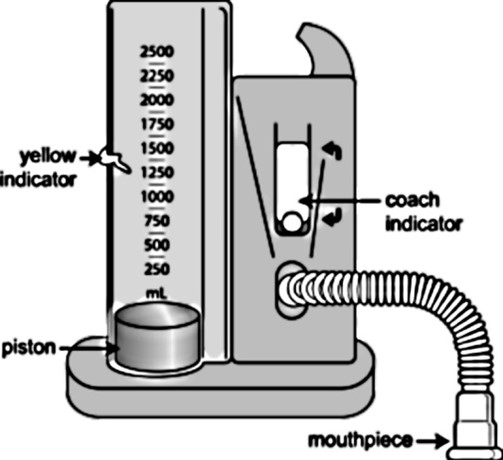
Figure 1: Incentive spirometry device.
Diagnostic spirometry #
Diagnostic spirometry, on the other hand, is exactly as the name states: A clinical evaluation used to diagnose (and monitor) lung diseases. Diagnostic spirometry is the clinical standard; it’s the most comprehensive and precise form of measuring how a person’s lungs are functioning. This form of clinical investigation requires the use of a specialized device, such as ndd’s EasyOne Air and Easy on-PC spirometers, to measure the flow of air from the individual taking the test into a multitude of spirometry measurements. Some measurements can have independent significance, such as FEV1 which can help distinguish between obstructive or restrictive lung disease.
The Global Initiative for Asthma and Global Initiative for Obstructive Lung Disease, the leading global organizations for asthma and COPD, respectively, both describe the use of diagnostic spirometry measurements in confirming a diagnosis for the conditions as well as a standard part of managing both conditions. Spirometry is such a crucial part of managing asthma and COPD on a global scale that its underutilization is one of the driving reasons for under-diagnosis of both conditions worldwide. Further, spirometry is performed quarterly as part of routine management of cystic fibrosis, with one study finding that routine spirometry was associated with higher rates of diagnosis and treatments of exacerbations with potential long-term ramifications in pulmonary function due to the importance of treating exacerbations as early as possible.4 Moreover, diagnostic spirometry (also sometimes called “office spirometry”), has indications outside of diagnosing asthma and COPD. It has more diagnostic uses, such as evaluating patients with shortness of breath, screening individuals at risk of pulmonary diseases, or assessing preoperative risk, prognosis, or health status prior to a strenuous physical activity program; it also has monitoring indications, including assessing the efficacy of a therapeutic intervention or monitoring people exposed to injurious agents at work; diagnostic spirometry even has public health implications, such as being used in epidemiologic surveys or clinical research.5
Market leading diagnostic spirometer
See a live demo!
Conclusion #
Spirometry is a pulmonary function test that measures how much and how forcibly one can exhale after a deep inhale. Incentive spirometry is a specific type of spirometry that aims to encourage people to breathe deeply intentionally but does not provide a measurement or inform management of chronic lung diseases. Diagnostic spirometry, on the other hand, is a comprehensive, precise way of measuring lung function. Diagnostic spirometry can be used to diagnose people with lung disease and, upon diagnosis, becomes a crucial part of managing lung diseases.
Franklin E, Anjum F. Incentive Spirometer and Inspiratory Muscle Training. In: StatPearls Publishing; 2023. Accessed July 31, 2023. http://www.ncbi.nlm.nih.gov/books/NBK572114/ ↩︎
So MW, Heo HM, Koo BS, Kim YG, Lee CK, Yoo B. Efficacy of incentive spirometer exercise on pulmonary functions of patients with ankylosing spondylitis stabilized by tumor necrosis factor inhibitor therapy. J Rheumatol. 2012;39(9):1854-1858. doi:10.3899/jrheum.120137 ↩︎
Hristara-Papadopoulou A, Tsanakas J, Diomou G, Papadopoulou O. Current devices of respiratory physiotherapy. Hippokratia. 2008;12(4):211-220. ↩︎ ↩︎
de Aquino CSB, Rodrigues JC, da Silva-Filho LVRF. Routine spirometry in cystic fibrosis patients: impact on pulmonary exacerbation diagnosis and FEV1 decline. J Bras Pneumol. 48(3):e20210237. doi:10.36416/1806-3756/e20210237 ↩︎
Langan RC, Goodbred AJ. Office Spirometry: Indications and Interpretation. Am Fam Physician. 2020;101(6):362-368. ↩︎
Written by

Tré LaRosa
Tré LaRosa is a consultant, scientist, and writer in the Washington, DC area with extensive experience working in research (basic, translational, and clinical) and on patient-reported outcomes. He has also written extensively on neuroscience, pulmonology, and respiratory conditions, including from the patient perspective. He enjoys learning, reading, writing, spending time outdoors, and telling everybody about his mini golden retriever, Duncan.

